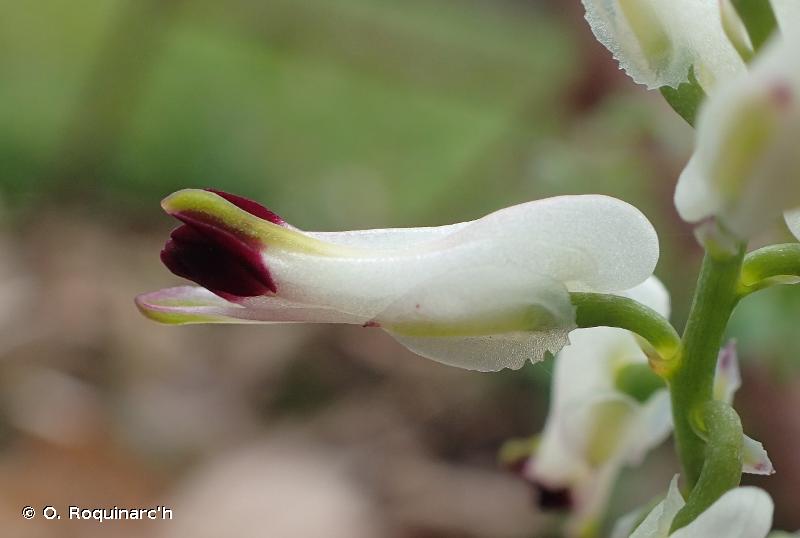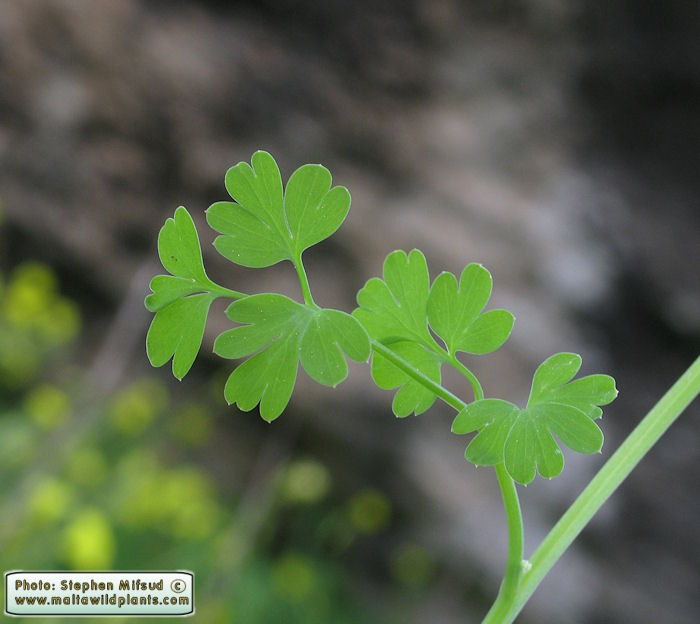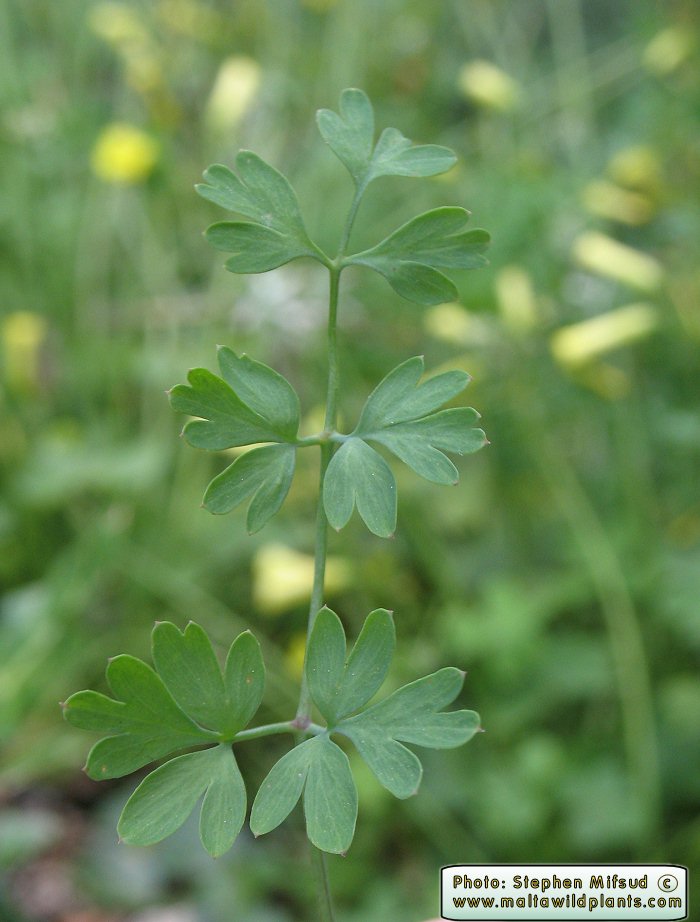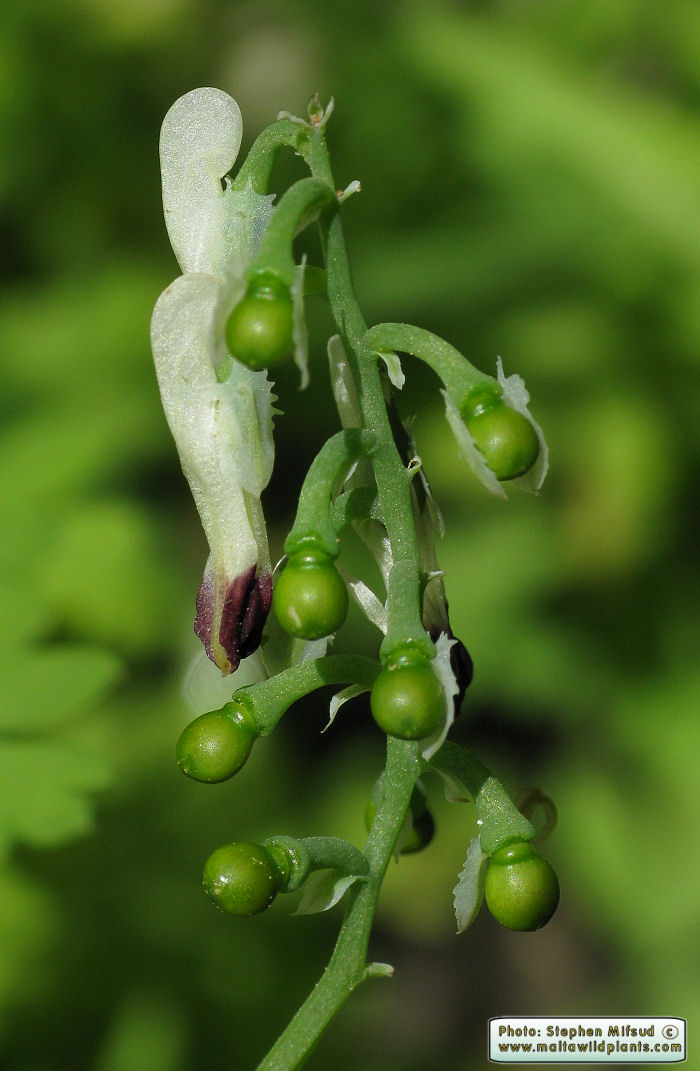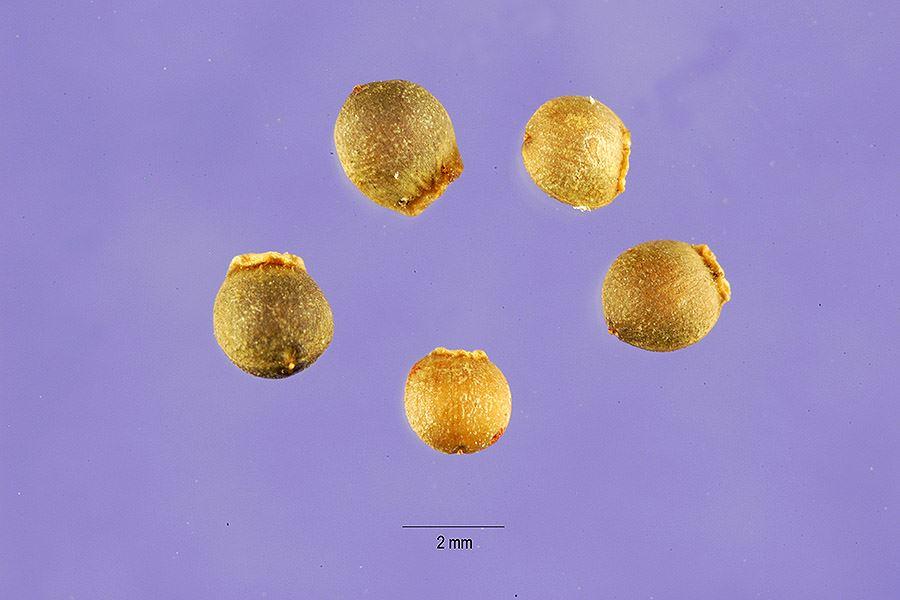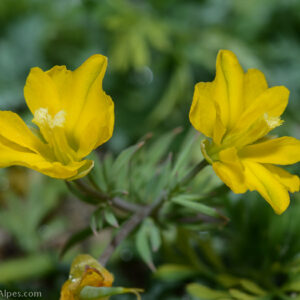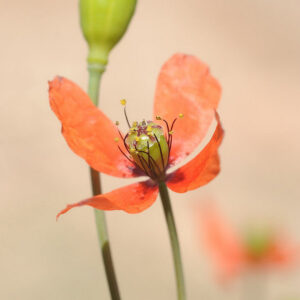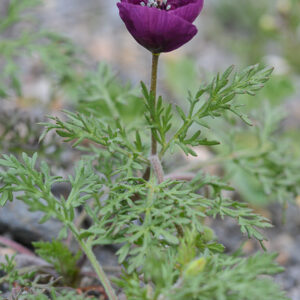| Fumaria capreolata L., it is an annual plant, have stems to 1 m long, and sometimes climb. The leaves are pinnatisect. Inflorescences racemes dense, up to 20-flowered, shorter than the peduncle (bare portion below the raceme). Bracts linear-lanceolate, slightly shorter than the fruiting, often rigidly recurved pedicels. Sepals 4-6 x 2.5-3 mm, ± dentate near the base. Corolla 10-14 mm long, usually creamy white; wings of upper petal and apex of inner petals blackish-red; lower petal with very narrow, erecr margins. Fruits smooth or obscurely rugulose, obscurely keeled, 2-2.3 x 1.8-2.3 mm. Life Form: Th, Flowering in: Feb-May, Vern:—————, Phytochoria: MED , The native range of this species is Canary Islands, NW. Europe to Medit. Notes: Wild in Libya.
For more information: https://powo.science.kew.org/taxon/urn:lsid:ipni.org:names:672920-1, https://www.ipni.org/n/672920-1, https://www.worldfloraonline.org/taxon/wfo-0000693173, https://www.gbif.org/species/5334218, https://africanplantdatabase.ch/en/nomen/specie/149746/fumaria-capreolata-l, https://www.maltawildplants.com/FUMR/Fumaria_capreolata.php, https://www.preservons-la-nature.fr/flore/taxon/4268.html, https://www.florealpes.com/fiche_fumeterregrimp.php, https://keyserver.lucidcentral.org/weeds/data/media/Html/fumaria_capreolata.htm, https://en.wikipedia.org/wiki/Fumaria_capreolata |
| Distribution in Libya | |
| Al-Jafarah Plain | Al-Jabal Al-Akhder |
| Reported from Tripoli by Durand & Barratte | Reported from Wadi Derna by Durand & Barratte Wadi (Valley) Stowah region 2007 Wadi Haboon 2015 Habun (Ain Al-Shallala) 2017 Wadi Jarjar-Omma 2017 |
| Bibliographic references: | |
| First: Encyclopedia Flora of Libyan: | |
| Jafri, S.M.H. & El-Gadi, A. (1977) Flora of Libya, Fumariaceae Vol. (43) Department of Botany, Al-Faateh Univ., Tripoli, Libya. | |
| Second: Researches and PhD theses, master theses, Sorted by Newest: | pdf files |
| Abusaief, H. M. A. (2017) Similarities between elevations in a rare species of some locations at Al- Jabal Al-Akhdar in Libya. International Journal of Environment ISSN 2077-4505.Volume: 06 Issue: 03 July-Sept. 2017, Page: 78-102. http://www.curresweb.com/ije/ije/2017/78-102.pdf | Similarities between elevations in a rare species 2017 |
| Abusaief, H.M.A. & Alwishish, F.M. (2017) Survey of endangered plants and description the seeds in some sites at Al-JabalAl-Akhdar of Libya. Curr. Sci. Int., 6 (3): 511-539, 2017 ISSN 2077-4435. http://www.curresweb.com/csi/csi/2017/511-539.pdf | Survey of endangered at Al-Jabal Al-Akhdar 2017 |
| Mukassabi, T.A., Thomas,P.A., ELMogasapi, A.(2017) Medicinal plants in Cyrenaica, Libya: existence and extinction. Biological Diversity and Conservation – 10/2 (2017) 183-192. https://bit.ly/44GKtLd, https://eprints.keele.ac.uk/id/eprint/4064/ | Medicinal plants in Cyrenaica 2017 |
| El-Rabiai, G.T. & Al tira, M. (2015) Checklist of the Flora of Wadi Haboon at AI Jabal AI Akhdar (Cyrenaica, Libya). International Journal of Pharmacy & Life Sciences 6(8-9): Aug-Sep, 2015:4661-4665] Coden (USA): IJPLCP ISSN: 0976-7126. http://uob.edu.ly/assets/uploads/pagedownloads/27a3a-wadi-haboon.pdf | Wadi Haboon at AI Jabal AI Akhdar 2015 |
| Nawras, A. M. B. (2007) A study of the vegetation cover in the Wadi (Valley) Stowah region. Master Thesis. Botany Department-Faculty of Science-Garyounis University-Libya. (In Arabic) |


